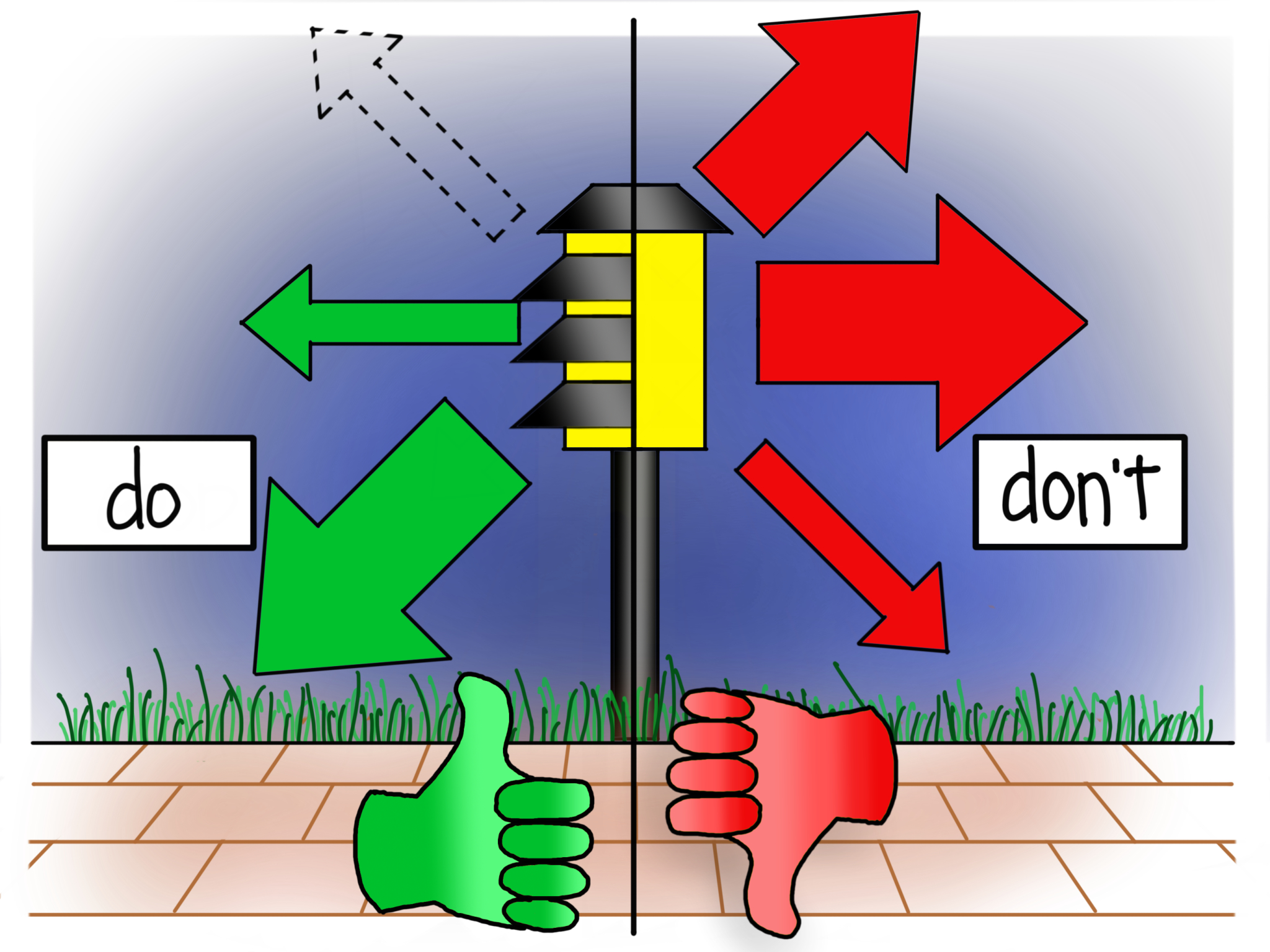Today marks a continuation in my 1THING: Plug In series and a reminder that my quest to simplify lighting can result in oversimplification of the profession. Why? I focus in this post on one plug-in solution for landscape lighting, boiling down to the most essential, most beneficial, or most impactful solution that can be achieved without professional help.
It might be silly to only do path lighting if you are attempting a DIY solution for your yard, however, and the risk of oversimplification is missing easy opportunities to multiply the impact of good lighting outdoors by picking out key features of you yard. But I’m a rule-follower, at least of the rules I made up for myself, so I’m sticking with it. Perhaps I will explore landscape lighting in more depth in the future….
But for now, let’s talk about path lighting. Like all lighting, indoors or out, commercial or residential, luxury or budget, it is important to put the right light in the right place.
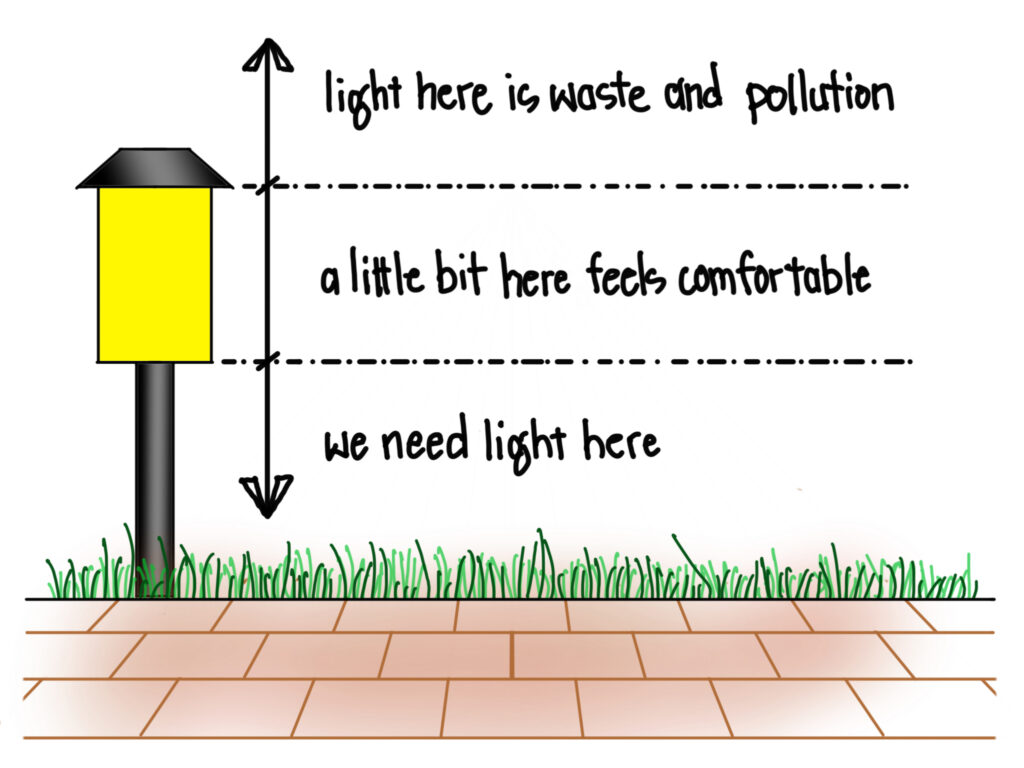
I played around with three choices in a recent 1THING post on front porches: outdoor lighting could be wonder or waste, glow or glare, and safety or slipping. Applied to path lights, any light going upwards, even slightly, is wasted light that will make it harder for you (and your neighbors, and the animals) to see the stars and enjoy the wonderful sky. The ideal path light has no light wasted.
A soft glow of light that reaches your eyes directly, typically out of the sides of the fixture, can be comforting and inviting, but the key here is that it needs to be a ridiculously small amount, especially at night. In fact, most fixtures will emit plenty of comfort-inducing light without any intentional “side-lighting.” Any more than is necessary results in glare, which is no fun for your eyes and potentially causes your irises to tighten, thus making it even harder to see the stars and the sidewalk. The ideal path light has little to no light coming out of its sides.
We do need light on the ground for our feet as we walk through the yard, for safety and comfort. Avoiding slips and falls is easier when you can see where you are going. The ideal path light pushes most of its light directly to the ground.
It appears to be surprisingly difficult to get an ideal path light, perhaps due to the proliferation of attracting looking light fixtures that deliver unhelpful light.
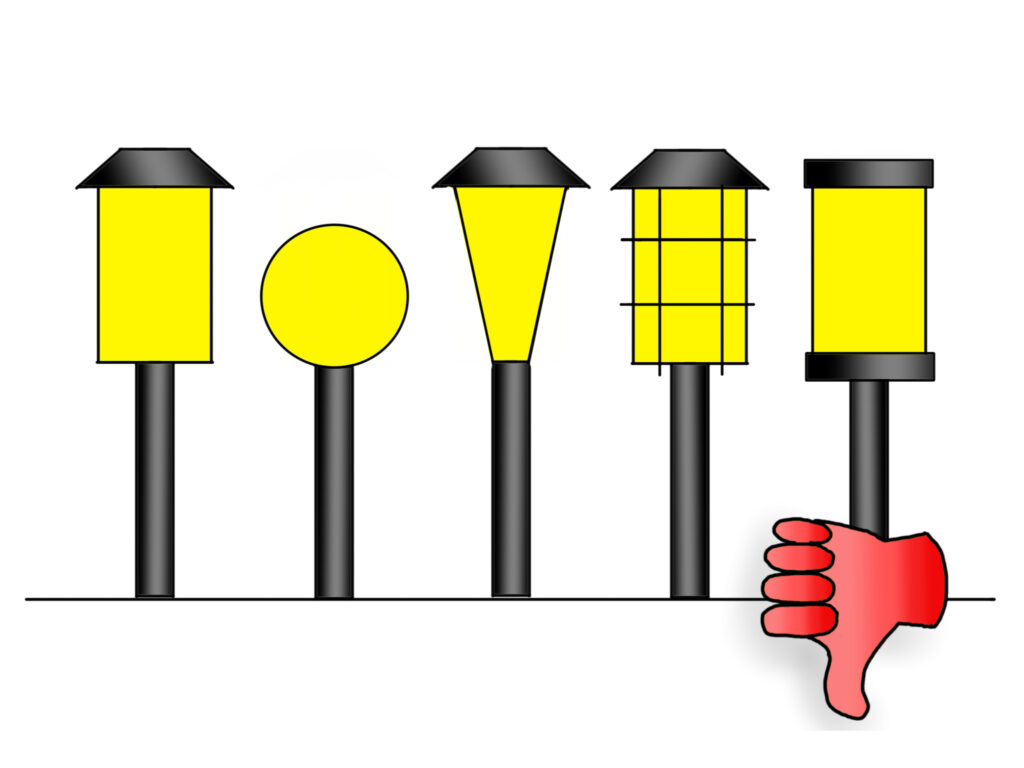
The ubiquity of solar path lights may have helped us a little by proliferating designs that have a solar panel on top of the fixture, limiting wasted light. Sadly, most still push more light out sideways than downwards, or push out so little light overall that we are left staring at the fixtures themselves and wondering where to put our feet. We’re all to blame for this reality – the manufacturers who make bad lights, the consumers who buy them, and the professionals who sit by and criticize (the latter is me).
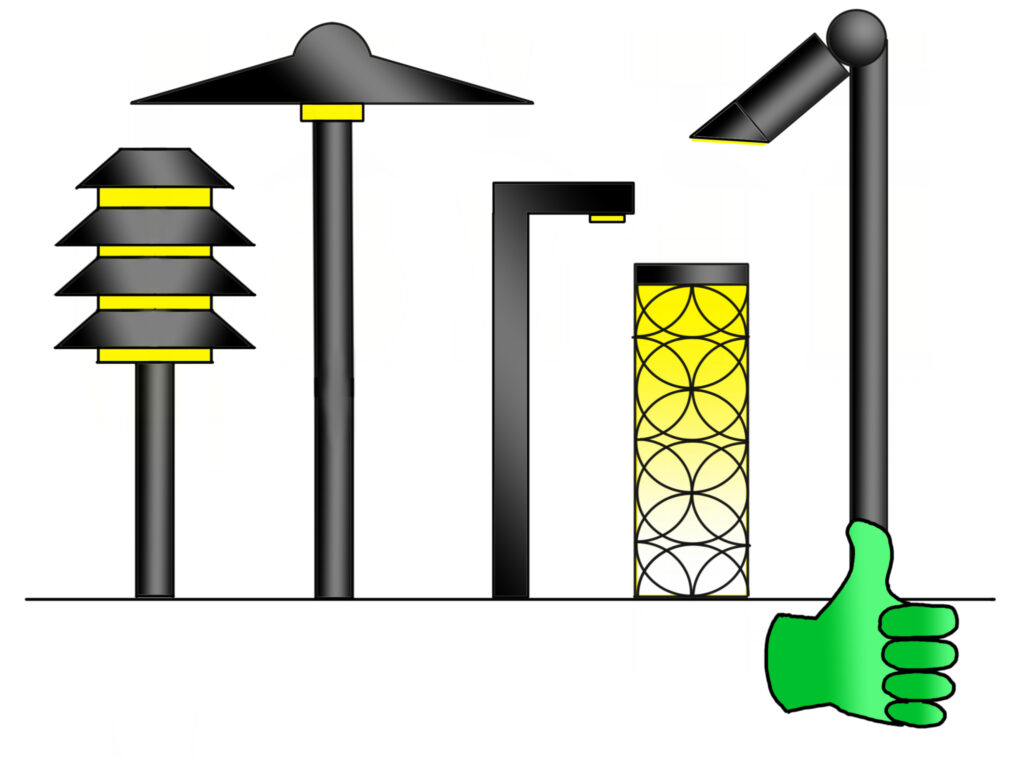
There are, of course, plenty of good path lights to be had if you know where to look. Don’t overlook the simple tiered hat design just because they’ve been around for decades- there is a reason this was seemingly the only style for many years. Simple canopy lights can be streamlined or elaborate, and more modern solutions can all but disappear day and night. I’ve even enjoyed a few bargain solar lanterns that project patterns onto the path, but finding reliable wired versions of these is not easy.
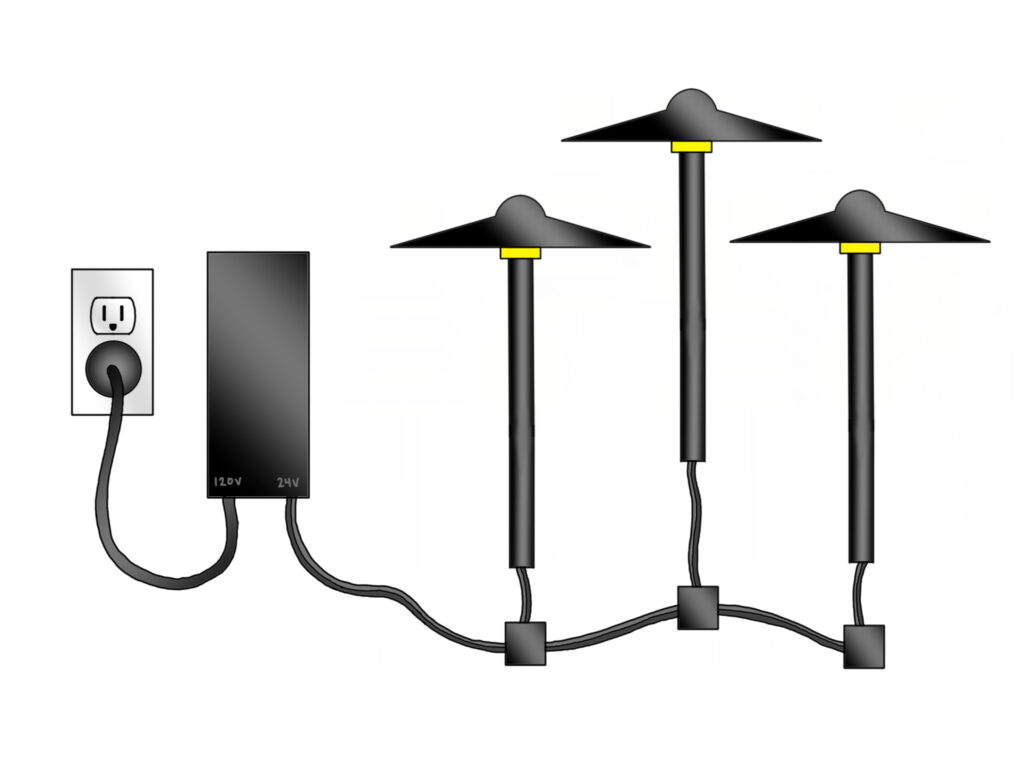
You can hire professionals install quality path lights, of course, and I recommend doing so whenever you can afford it. Professional installers know how to treat plants and lawns, generally have access to better equipment, and can deliver a solution that is more reliable and lower in maintenance. But since this is a plug-in series, keep in mind that you can do this yourself, too. Home improvement centers generally carry kits for the DIY crowd, and I’ve used a few for friends and family that work just fine, if needing a little extra annual love (and don’t expect them to last for decades).
A basic kit might contain six path lights, a transformer to convert your house’s line voltage electricity to safer low-voltage electricity, a cord to plug into a typical outlet, and a spool of wire to connect the lights. Many will have a timer of photocell included for automatic operation, so you don’t have to turn them on and off every day. I personally favor a timer because I don’t need my path lights on at 2am, and some combo units will cleverly turn the lights on when it gets dark…and turn them off at a preset time. If you need to buy extra wire to reach all the positions, keep in mind that too much wire could result in not enough electricity far away from the transformer.
And that is 1THING you can do yourself to live a better life with light.
And one more thing…
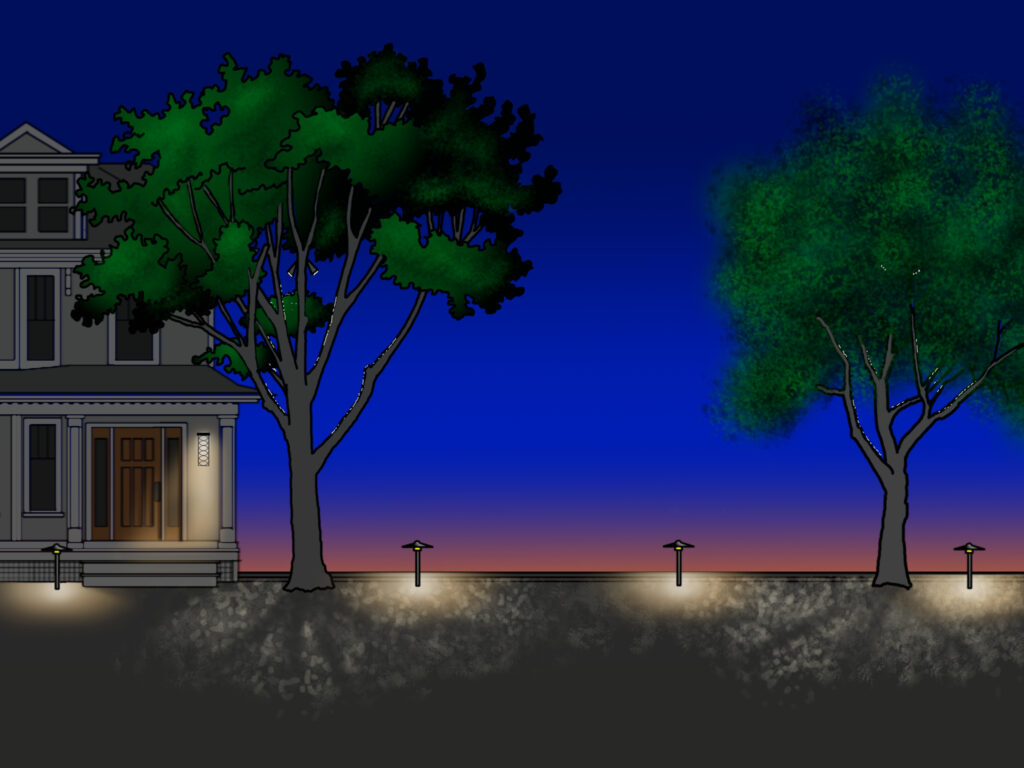
Ah, now doesn’t that feel better? The sketch above contains the path lights mentioned in this post, moonlighting from this post, and a front porch lantern from this post. Now we’re getting somewhere, eh? Proper lighting is almost always found in layers – that is the only way to get the right light in the right place.
